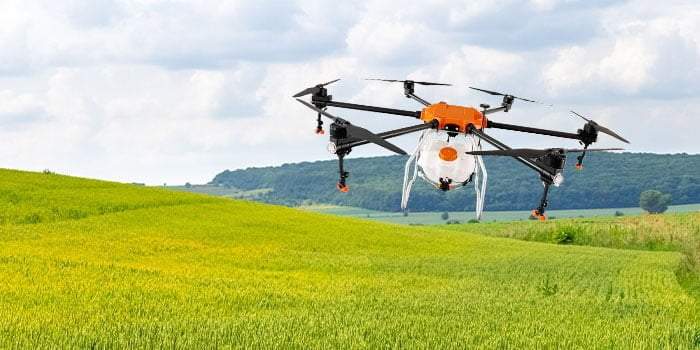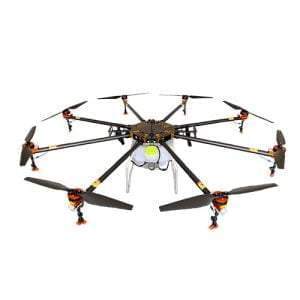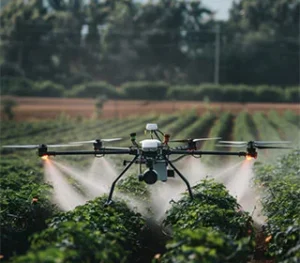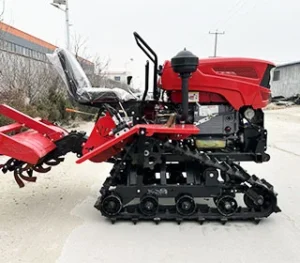Choosing the Best Drones for Crop Spraying
Welcome to My Blog!
Before we dive into the content, I’d love for you to join me on my social media platforms where I share more insights, engage with the community, and post updates. Here’s how you can connect with me:
Facebook:https://www.facebook.com/profile.php?id=61557298070472
Now, let’s get started on our journey together. I hope you find the content here insightful, engaging, and valuable.
Introduction
The integration of drones in agriculture has revolutionized modern farming, and one of the most impactful innovations is the use of drones for crop spraying. These aerial vehicles are becoming increasingly popular due to their efficiency, precision, and cost-effectiveness. However, with the variety of options available on the market, choosing the best drones for crop spraying can be challenging. This comprehensive guide will help you understand the key factors to consider when selecting a drone for crop spraying, the benefits they offer, and how they compare to traditional methods.
Understanding the Importance of Drones for Crop Spraying

What Are Drones for Crop Spraying?
Drones for crop spraying are unmanned aerial vehicles (UAVs) equipped with tanks, nozzles, and spray systems designed to distribute pesticides, herbicides, fertilizers, and other agricultural chemicals over crops. These drones use advanced technology to ensure precise application, reducing waste and minimizing environmental impact.
The Evolution of Drones in Agriculture
The use of drones in agriculture began with aerial imaging and mapping. Over time, as technology advanced, drones were adapted for crop spraying, offering farmers a more efficient way to manage their fields. Today, drones for crop spraying are a vital tool for precision agriculture, enabling farmers to monitor and treat their crops with greater accuracy and speed than ever before.
Benefits of Using Drones for Crop Spraying
- Precision and Accuracy: Drones can be programmed to spray specific areas, reducing the risk of over-spraying or under-spraying, which is common with traditional methods.
- Time Efficiency: Drones can cover large areas quickly, significantly reducing the time required for spraying operations.
- Cost-Effectiveness: By minimizing waste and ensuring precise application, drones for crop spraying can lower the overall cost of chemicals and labor.
- Environmental Impact: Drones reduce the amount of chemicals needed and ensure that they are only applied where necessary, minimizing their impact on the environment.
- Safety: Using drones reduces the need for farmers to be directly exposed to harmful chemicals during the spraying process.
Key Factors to Consider When Choosing Drones for Crop Spraying
Payload Capacity and Spray Width
One of the most critical factors when selecting a drone for crop spraying is its payload capacity, which determines how much liquid the drone can carry. Larger farms will benefit from drones with higher payload capacities, as they can cover more ground without needing to refill as often. Additionally, the spray width, or the area the drone can cover in a single pass, is essential for efficiency. Wider spray widths mean fewer passes are needed, reducing the time required for spraying.
Battery Life and Flight Time
Battery life and flight time are crucial factors in the efficiency of drones for crop spraying. Drones with longer flight times can cover more ground in a single charge, reducing the need for frequent battery changes or recharging. This is particularly important for larger farms where extensive coverage is required.
Durability and Weather Resistance
Since drones for crop spraying are used in outdoor environments, they must be durable and able to withstand various weather conditions. Look for drones that are weather-resistant, with features such as water and dust protection, to ensure they can operate effectively in different climates.
GPS and Navigation Systems
Advanced GPS and navigation systems are essential for precision agriculture. These systems allow drones to follow pre-programmed flight paths accurately, ensuring that the chemicals are applied exactly where they are needed. Some drones also offer real-time kinematic (RTK) positioning, which enhances accuracy even further.
Ease of Use and Software Integration
The ease of use of drones for crop spraying is another critical factor, especially for farmers who may not be familiar with advanced technology. Drones that offer intuitive controls and easy integration with software platforms can streamline operations, making it easier to plan and execute spraying missions.
Advanced Features to Look for in Drones for Crop Spraying
Autonomous Operation and AI Integration
Autonomous operation, where the drone can complete its mission with minimal human intervention, is becoming increasingly common in drones for crop spraying. Some drones also feature AI integration, which allows them to analyze data in real-time and make adjustments to the spraying process based on current conditions.
Multi-Spectral Imaging and Precision Agriculture
Some advanced drones for crop spraying come equipped with multi-spectral imaging cameras, which can capture detailed images of crops. These images can be used to assess crop health and detect issues such as pest infestations or nutrient deficiencies. This data can then be used to adjust spraying patterns and optimize the application of chemicals.
Customizable Spray Systems
Customizable spray systems allow farmers to adjust the flow rate, droplet size, and spray pattern according to the specific needs of their crops. This flexibility ensures that the right amount of chemicals is applied, reducing waste and improving crop yield.
Practical Tips for Using Drones for Crop Spraying
Conducting a Pre-Flight Inspection
Before deploying drones for crop spraying, it’s essential to conduct a thorough pre-flight inspection. This includes checking the drone’s battery level, spray system, GPS, and overall condition. Ensuring that the drone is in good working order can prevent malfunctions during the spraying operation.
Planning Your Flight Path
Planning the flight path is crucial for efficient spraying. Use GPS and mapping software to create a flight plan that covers the entire field while minimizing overlap. This ensures that all areas are treated without wasting chemicals.
Monitoring Weather Conditions
Weather conditions can significantly impact the effectiveness of crop spraying. It’s essential to monitor weather forecasts and choose a time when wind, rain, and temperature are optimal for spraying. Avoid spraying during high winds or heavy rain, as this can lead to uneven application and chemical drift.
Post-Flight Data Analysis
After completing a spraying mission, it’s essential to analyze the data collected by the drone. This can include information on coverage, chemical usage, and any areas that may have been missed. Use this data to make adjustments for future spraying missions and to optimize the overall process.
Table: Key Considerations for Choosing the Best Drones for Crop Spraying
| Consideration | Importance | Details |
|---|---|---|
| Payload Capacity | High | Determines how much liquid the drone can carry and how much area it can cover. |
| Battery Life | High | Affects how long the drone can operate before needing a recharge. |
| Durability | Medium | Ensures the drone can withstand outdoor conditions and last longer. |
| GPS and Navigation Systems | High | Critical for precision in spraying and following planned flight paths. |
| Ease of Use | Medium | Important for operators with varying levels of technical expertise. |
| Autonomous Operation | High | Reduces the need for manual control and increases efficiency. |
| Multi-Spectral Imaging | Medium | Useful for advanced crop monitoring and data analysis. |
| Customizable Spray Systems | Medium | Allows for precise application tailored to specific crop needs. |
Comparing Drones for Crop Spraying with Traditional Methods

Efficiency and Coverage
Drones for crop spraying offer significantly higher efficiency compared to traditional methods such as manual spraying or using ground vehicles. Drones can cover large areas in a fraction of the time, making them ideal for large farms or areas with difficult terrain.
Cost Considerations
While the initial investment in drones for crop spraying may be higher, they often result in long-term savings. This is due to their precision in applying chemicals, which reduces waste and the need for reapplication. Additionally, the reduced labor costs associated with drone operation contribute to overall cost savings.
Environmental Impact
Drones for crop spraying are more environmentally friendly than traditional methods. Their precision reduces the amount of chemicals used, minimizing runoff and the impact on surrounding ecosystems. This is particularly important in areas where environmental regulations are strict.
FAQ
What are crop-spraying drones?
Crop-spraying drones are unmanned aerial vehicles designed specifically for agricultural applications, including the spraying of pesticides, fertilizers, and herbicides.
What key factors should I consider when selecting a crop-spraying drone?
Key factors include payload capacity, spraying width, spraying accuracy, flight time, control range, and wind resistance.
What are the advantages of using crop-spraying drones?
Crop-spraying drones offer high efficiency, water conservation, precise application, reduced labor costs, and lower pesticide residue levels.
Do I need training to operate a crop-spraying drone?
Yes, operating a drone requires specific skills, and many regions require operators to have certain licenses or certifications.
What are the differences between various types of crop-spraying drones?
Different types of drones may vary in payload capacity, spraying technology (such as electrostatic spraying and air-assisted spraying), and flight control systems, catering to different agricultural needs.
Are the maintenance costs for crop-spraying drones high?
Maintenance costs can vary based on the brand and usage frequency. Regular upkeep and part replacements are necessary, but overall they tend to be lower than manual spraying costs in the long run.
How efficient is the use of crop-spraying drones?
Crop-spraying drones can quickly cover large areas of farmland, often achieving spraying efficiencies several times greater than traditional methods, completing tasks in a shorter time frame.
Which brands are reputable for crop-spraying drones?
Some well-known brands include DJI, Yamaha, and eBee. You can choose based on reviews and customer feedback.
What is the typical flight time for crop-spraying drones?
Most crop-spraying drones have a flight time ranging from 20 to 40 minutes, depending on battery capacity and payload.
What weather conditions are suitable for using crop-spraying drones?
The best spraying conditions are sunny days with light winds. It is advisable to avoid using drones in strong winds or rain to ensure spraying effectiveness and flight safety.


